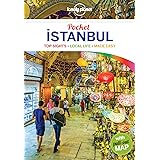Konya Söylemez Tomb and Zaviye and Sheikh Fazıl Hüseyin Efendi
According to Müfid Bey, it was originally an Indian Lodge, known as the Söylemez Tomb in Konya. It is written in his inscription that he is an Indian. The guys are Indian, not Hindu. These were lodges reserved for Indian Muslims. Their sheikhs were always Indian. Source: The Serencâmi of Islamism in the Process of Modernization.
The following information on the subject is taken from the December 2001 issue of Meram Municipality Culture and Art magazine, which is no longer in publication. Thanks to my dear friend Hüseyin Alagöz, who brought the information to this issue…
After the 1071 Malazgirt Victory, the Anatolian lands became the places where dervishes and sufis from different parts of the Islamic world talked about Islam in dervish lodges and lodges. In 1096, when Konya became the capital of the Anatolian Seljuk state, it became a center of science and culture in this sense. In this scientific and cultural movement, it is impossible not to count the “Siyonmez Tomb” and the sheikh Fazıl Hüseyin Efendi, which were an important building block in the last period of the Ottoman Empire. The number of studies on this subject is very few, during our studies, Mr. Assoc. Dr. We came across Yusuf KÜÇÜKDAĞ’s extensive research on the Söylemez Tomb. I would like to thank my teacher Assoc. Dr. Yusuf KÜÇÜKDAĞ for his work.
WHO IS SHEIKH FAZIL HUSEYIN EFENDI?
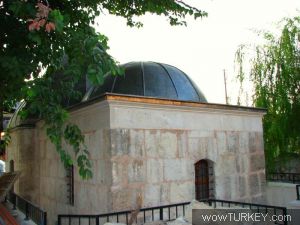
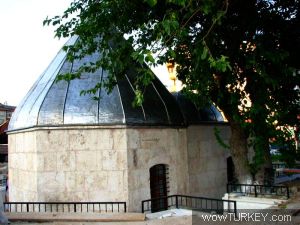
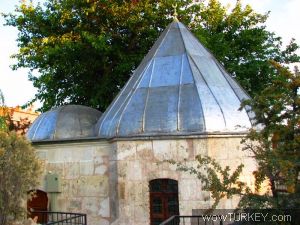
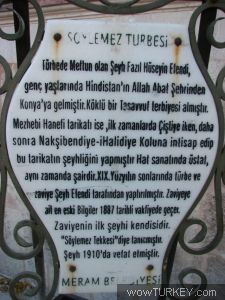
It is known that he leads a shrewd life, has no interest in the world, and stays away from people and busy city life. The mausoleum, which is called Kanlıgöl in Konya, adjacent to Muhacir Pazari or Balıkçılar district, was built by Sheikh Efendi after his death, to be buried. He spent his life in a space with a width of 35, ( Zira is one of the length measures used before the metric system was adopted. It is the measure of length from the elbow to the tip of the middle finger), which he had dug into this tomb.
Near the tomb, there are two buildings built by the sheikh himself as zawiyah. In addition, he donated two houses built by the Minister of Justice es-seyyit al-Hajj Abdurrahman Nurettin Pasha, who also served as the Grand Vizier during the reign of Abdulhamid, to the zaviye. These houses are known as Söylemez Konağı. Sheikh Efendi never used this mansion and lived in the place where he had it built as a zawiya, which was almost a grave pit.
As it is said that co-Sheikh Fazıl Hüseyin Efendi did not speak because of his preferred lifestyle, it is also mentioned that as someone who came to Konya from India, there was a problem due to the difference in spoken language. Another narration is that Sheikh Efendi Hz. It is said that the people gave him the nickname “Doesn’t Speak” and his real name was forgotten because the Prophet (pbuh) kept the hadith of “Whoever believes in Allah and the Hereafter, either say good or be silent” and kept silent and never spoke worldly words. .
It is understood from the charters that Sheikh Fazıl Hüseyin Efendi came to Konya before 1887. According to different narrations, he is said to have lived for 63.83 or 90 years. It is understood from the records that he came to Konya at a young age. It is stated that he was martyred on September 4, 1910, and that he died in some foundation charters.
Sheikh Effendi; He was born in Ahmet-pur serame village of Allahabad city of India, his father’s name is Cevher Ali. He is of Arab race and his lineage is “Hz. Osman Zinnureyn” and “Imam Hazrat Zeynelabidin” is registered in the charter I.1-5;11.,10-15;111.,15-20. It is understood that Sheikh Efendi‘s ancestors, like many of the Muslims in India, came to India with the idea of working on guidance.
After a good madrasa education in India, he trained himself in the field of Sufism. He is a member of the Ciştiye sect in India. The reason for coming to Anatolia is to spread this sect in Anatolia. The number of people who joined this order in Konya was very small. Among the reasons for this; The cistiye sect has rules that are hard to live by. Because those who belong to this sect should almost completely cut off their connection with the world. They do not attach importance to anything worldly, especially clothing. The word kalender-i in Sheikh Efendi‘s expression çişti-kalender-i on the existing gravestone today has an equivalent meaning to the word kalender, which does not care about the world and worldliness.
While Sheikh Efendi‘s Sect was Hanefi and his sect was a çiştiye when he first came to Konya (Vakfiye I., 1-5), he later became a Sheikh, the foundation that he joined to Nakşibendi and Kadiriye, which can be considered as the closest to the çiştiye, where he was the Sheikh of this order. evident from the records. According to a charter, it will testify that; He says that those who will benefit from the zaviye and its annexes can benefit from it, provided that they are affiliated with the Naqshi or Qadiri sect.
In short, when we see that Söylemez had a zawiya built in Konya and published the Nakşibendiye Sect, we can say that he belonged to the Halidiye branch of the Nakşibendiye. Because XIX. XX century at the end of the century. The existence of many Nakşibendiye-i Halidiye Lodges in Konya at the beginning of the century was a fact. In the Ottoman state; XIX. The Sufi education was given in India by Mevlana Halid-i Bagdadiye, the founder of Nakşibendiye-i Halidiye, which spread rapidly in the 19th century. This information reinforces that Söylemez belonged to the Halidiye branch of Nakşibendiye and became the sheikh.
Seyf Fazıl Hüseyin Efendi is also known for his interest in fine arts. He was especially skilled in calligraphy. V. Sabri Uyar showed him among the calligraphers because of this aspect and gave information about his life. Sheikh Efendi could write fine thuluth, naskh, and ta’lik. Uyar says that he saw a 28-page Tarikatname and an 11-page Persian silsilename in the hands of an old man named Hasan Dede, who lived in Pirebi Neighborhood in the 1940s. Soylemez also has poetry. V. Sabri Uyar writes that he saw a three-page eulogy.
Söylemez Zaviyesi, by Sheikh Fazıl Hüseyin Efendi, was built in the 19th century. It was built at the end of the century. Considering the location where it was founded and the structures in the poem, this is a typical Ottoman period zaviye. However, during the cadastral studies carried out in 1926, it was registered as “Siyonmez Lodge” and as “Sheikh Fazıl Efendi Lodge” in the land registry. (Konya land registry and cadastre regional directorate, 23 neighborhoods, 29 plots, 133 Island; Meram Land Registry Office, Section 29, Island 133, Plot 2.) However, it is mentioned as a zawiyah in its charter and other foundation records. Since Tekke and Zaviye are used in the same sense among the people, they are written as Tekke in cadastral measurements.
However, Tekke and Zaviye are two separate sect structures with nuances in terms of their functions.
DERVISH LODGE; It is established under a Sect center, where dervishes belonging to that order live collectively and perform their traditions and worship. The different aspect of the lodge from the zawiyah is that it is the place where the traditions of any sect are maintained and its teachings are conveyed. Such cult structures were located in city centers and their needs were met with foundation income. The dervishes here do not engage in agriculture.
ZAVIYE; The dictionary meaning is corner, parish. In the language of Sufism, it was a zawiyah, “a secluded or hut where a devotee retreats to engage in worship”.
Like dervish lodges, it is the place where dervishes and their sheikhs perform the dhikr and rites of the sect they belong to. Despite the fact that the lodge is located within the settlements, the zaviye is established on an empty land outside the city centers.
The needs of those who stayed here were met by planting the land belonging to the zawiyah. In the zawiya, “ayende and revendeye”, that is, passengers passing by, were served and the agricultural products obtained were also offered to them. One of the most important features that distinguishes the zawiyah from the lodge is that the responsibility is entirely on the zawiya sheikh, regardless of being connected to the sect center.
The architect of the Söylemez Tomb is unknown. It must have been built by an architect from Konya. Because XIX. Although it was built at the end of the century, especially the coffin section does not resemble the Ottoman period tomb architecture. Here, the ehrami mausoleum tradition of the Seljuk and Karamanogullari era, of which many examples can be found in Konya, seems to have been imitated.
As a matter of fact, apart from the tomb of the tomb in front of it, Söylemez Tomb; It is like a small copy of the Ulaş Baba vault, which is known to have been built during the Karamanoğulları period.
Soylemez Tomb has a special place among the Ottoman era tomb architecture in Konya. However, it was included in the list of antiquities to be protected in 1982, and it was registered as a 2nd group monumental building on 09.06.1989. Despite this, it is understood from the bricks that are about to melt, especially in the cupola section, that it needs to be restored as it is today. Hoping to draw the attention of the authorities.. By saying that our historical artifacts are our identity as a society, our essence; As all Konya residents and people living in Konya, I wanted to remind our spiritual sultan, to draw the attention of our people here, and to remind that we must protect these historical heritages.
Konya Söylemez Türbe ve Zaviyesi ve Şeyh Fazıl Hüseyin Efendi



